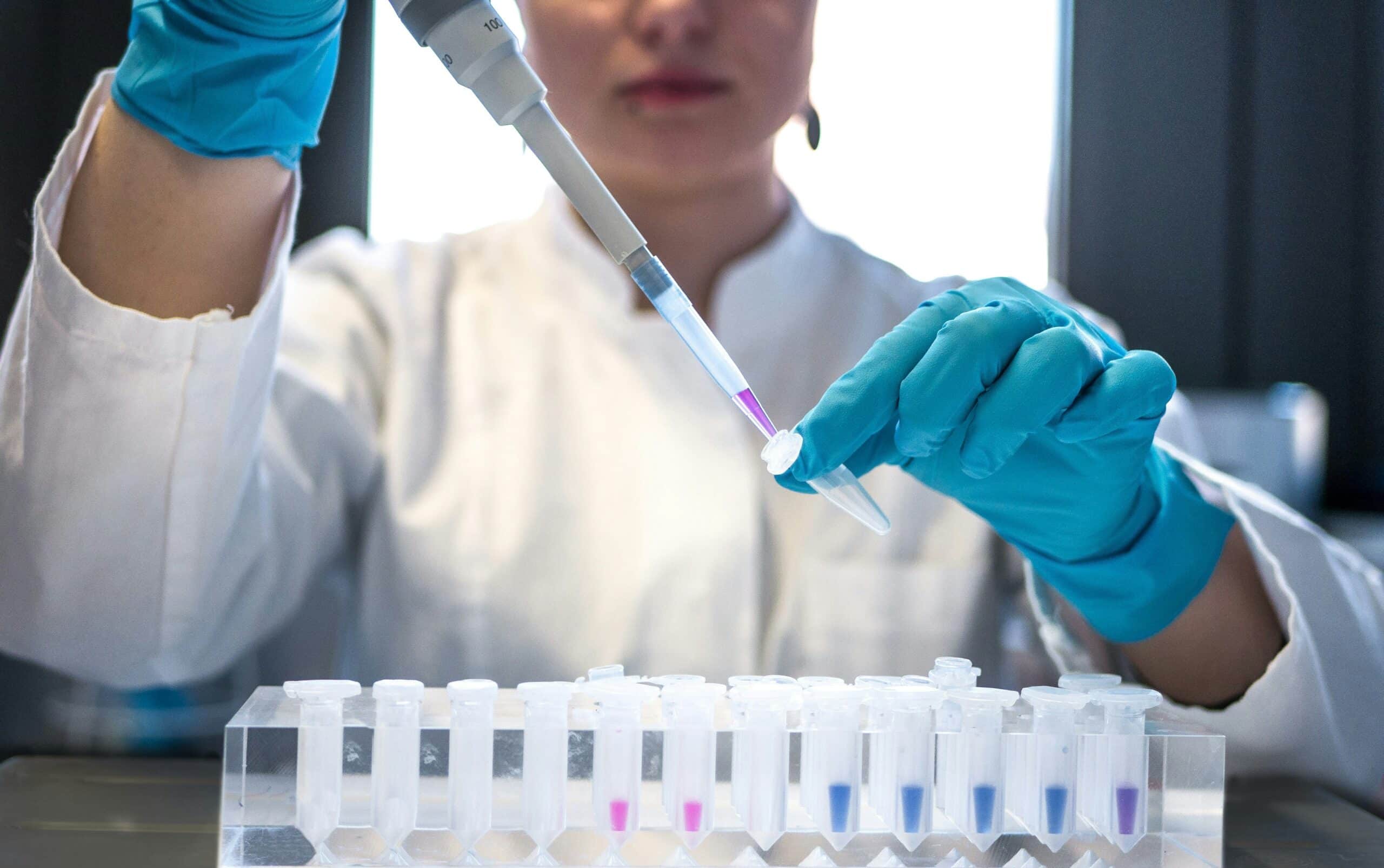Endometriosis is a chronic condition in which uterine‐like tissue grows outside the uterus, affecting one in ten women of reproductive age worldwide and often leading to significant pain and fertility challenges. Raising endometriosis awareness for early diagnosis empowers women to recognize key symptoms, advocate for thorough evaluations, and access specialized care at centers like the Endo Excellence Center.
This article explains endometriosis, highlights why prompt recognition matters, outlines the full diagnostic journey, reviews medical and surgical management options, and offers practical lifestyle and emotional support strategies. Readers will learn to spot both common and atypical signs, understand imaging and laparoscopy procedures, explore hormone and pain management therapies, and discover evolving research that promises easier diagnosis and personalized treatments.
What Is Endometriosis and Why Is Awareness Crucial for Early Diagnosis?

Endometriosis is a medical condition where endometrial‐like tissue implants on the ovaries, fallopian tubes, peritoneum, or other pelvic structures, causing inflammation, scarring, and chronic pain. Early recognition of these ectopic implants reduces the years of diagnostic delay, often seven to ten years improving pain control, preserving fertility, and enhancing quality of life. For example, a young woman with persistent monthly pelvic pain who learns to link her symptoms to endometriosis can seek a specialized consultation at a center equipped for swift laparoscopy.
What Causes Endometriosis and Who Is at Risk?
Endometriosis arises through mechanisms such as retrograde menstruation, immune dysfunction, and genetic predisposition, and it most often affects women aged 25–40. Risk factors include family history of endometriosis, early menarche, and prolonged menstrual cycles. Women with these attributes should be particularly vigilant when pain disrupts daily life.
How Does Endometriosis Affect Women’s Health and Fertility?
Endometriosis stimulates inflammatory processes that can damage ovarian reserve and distort pelvic anatomy, which lowers egg quality and hampers embryo transport. Around 30–50% of women with endometriosis experience infertility. Early diagnosis improves fertility preservation options, such as egg freezing or conservative excision surgery, by addressing lesions before they worsen.
Impact of Endometriosis on Fertility
Endometriosis can negatively affect fertility through various mechanisms, including damage to ovarian reserves and distortion of pelvic anatomy. This can lead to reduced egg quality and impaired embryo transport, impacting a woman’s ability to conceive.
Why Does Diagnostic Delay Occur and How Does Awareness Reduce It?
Diagnostic delay often results from normalizing menstrual pain, misinterpretation of symptoms, and limited access to specialists. Awareness campaigns teach women and primary care providers to differentiate endometriosis pain from standard cramps. Recognizing red flags—such as cyclical pelvic pain, painful intercourse, or unexplained fatigue—prompts earlier referrals to gynecologists trained in minimally invasive diagnosis.
Endometriosis and Diagnostic Delay
Diagnostic delays in endometriosis are common, often spanning several years, due to factors such as symptom normalization and misdiagnosis. This delay can lead to increased pain and reduced quality of life for those affected.
What Are the Common and Atypical Symptoms of Endometriosis?

Symptoms of endometriosis range from classic pelvic pain to less obvious signs like bowel disturbances and fatigue. Understanding both common and atypical manifestations helps women and clinicians uncover the condition sooner.
Early in the disease course, subtle cues often emerge that may be mistaken for routine menstrual discomfort.
What Are the Early Signs of Endometriosis to Watch For?
Women should look for:
- Persistent menstrual cramps that worsen over time.
- Pain during or after intercourse.
- Increasing pelvic pressure or heaviness.
- Unexplained fatigue coinciding with menstrual cycles.
These early indicators can lead to targeted evaluation rather than repeated symptom suppression.
How Do Pelvic Pain and Other Symptoms Manifest in Endometriosis?
Pelvic pain in endometriosis derives from inflammation and adhesions that tether organs together. Pain may present as:
- Dysmenorrhea: Severe menstrual cramps beyond normal expectations.
- Dyspareunia: Deep pain during intercourse.
- Chronic Pelvic Pain: Persistent ache unrelated to period timing.
What Are Less Known or Atypical Symptoms of Endometriosis?
Besides pain, endometriosis can cause less recognized issues such as bladder irritation, rectal discomfort, or cyclical headaches. One such presentation is:
How Can Fatigue and Digestive Issues Signal Endometriosis?
Women may experience debilitating fatigue due to ongoing inflammation and iron deficiency from heavy periods. Digestive symptoms—bloating, diarrhea, or constipation—often worsen around menstruation if bowel implants are present.
How Is Endometriosis Diagnosed? Understanding the Diagnostic Journey

Establishing an accurate endometriosis diagnosis typically involves a step-by-step process that includes detailed patient history taking, a thorough physical examination, and advanced imaging such as transvaginal ultrasound or MRI. In many cases, definitive confirmation is achieved through laparoscopic surgery with biopsy. Clear awareness of early symptoms, such as chronic pelvic pain, bloating, nausea, heavy menstrual bleeding, and fatigue combined with strong patient self-advocacy can significantly accelerate diagnosis, ensuring earlier access to targeted medical or surgical treatment and reducing the risk of disease progression.
What Happens During the Initial Consultation and Physical Exam?
The first visit includes a detailed pain and menstrual history, pelvic exam to identify tenderness or nodules, and discussion of symptom patterns. This structured approach narrows potential causes and prepares for targeted imaging or referral.
How Effective Are Imaging Tests Like Ultrasound and MRI for Diagnosis?
Ultrasound and MRI locate some endometriotic cysts and deep lesions but can miss tiny peritoneal implants. Imaging works best for ovarian endometriomas and deep infiltrating disease.
Why Is Laparoscopy the Gold Standard for Endometriosis Diagnosis?
Laparoscopy provides direct visualization and biopsy of implants, confirming diagnosis and allowing concurrent lesion removal. Recovery typically spans one to two weeks, and excision during the same procedure reduces pain and recurrence.
Laparoscopy as the Gold Standard
Laparoscopy is considered the gold standard for diagnosing endometriosis because it allows for direct visualization and biopsy of implants. This method confirms the diagnosis and enables concurrent lesion removal, improving patient outcomes.
This citation reinforces the article’s emphasis on laparoscopy as a definitive diagnostic tool.
What Causes Diagnostic Delays and How Can Patients Advocate for Timely Diagnosis?
Delays stem from symptom normalization and misdiagnosis as irritable bowel syndrome or pelvic inflammatory disease. Women can prepare symptom journals, request imaging referrals, and ask explicitly about endometriosis at gynecology visits to shorten the path to laparoscopy.
What Treatment Options Are Available After Diagnosis? A Holistic Approach to Managing Endometriosis

Effective endometriosis care combines evidence-based medical therapies, targeted surgical interventions, and supportive lifestyle strategies to control pain, reduce inflammation, and protect fertility. Medical treatments may include hormonal therapy to regulate the menstrual cycle, anti-inflammatory medications for pain relief, and symptom-specific management for issues such as nausea, bloating, and fatigue. Surgical options, including laparoscopic excision or ablation of endometrial lesions, aim to restore pelvic anatomy, alleviate chronic discomfort, and improve reproductive outcomes. Complementary strategies such as dietary modifications, stress management, and gentle physical activity help enhance overall well-being and provide long-term symptom control.
How Is Pain Managed Through Medical and Complementary Therapies?
Pain management includes nonsteroidal anti‐inflammatory drugs (NSAIDs), pelvic floor physical therapy, and mind–body techniques like yoga or acupuncture. Integrating complementary approaches with medical care eases discomfort while reducing reliance on medications.
What Hormonal Therapies Are Used and What Are Their Side Effects?
Hormonal treatments suppress estrogen that fuels implant growth. Common options include oral contraceptives, progestins, and gonadotropin‐releasing hormone (GnRH) agonists.
When Is Surgery Recommended and What Does Excision Surgery Involve?
Surgical excision is advised for severe pain unresponsive to hormones, deep infiltrating disease, or when fertility preservation is a priority. Excision removes implants at their base and minimizes recurrence better than ablation alone.
How Can Fertility Be Preserved During Endometriosis Treatment?
Fertility preservation strategies include egg or embryo freezing before extensive surgery and conservative excision techniques that spare ovarian tissue. Early counseling ensures women maintain reproductive options.
How Can Patients Live Well with Endometriosis? Support, Lifestyle, and Emotional Management

Living with endometriosis requires a multifaceted approach that combines emotional support, dietary adjustments, and effective pain-coping strategies to help sustain daily function and overall quality of life. Emotional well-being can be strengthened through counseling, support groups, and stress-reduction practices such as mindfulness or meditation. Dietary modifications, including adopting an anti-inflammatory diet rich in omega-3 fatty acids, fresh fruits, vegetables, and whole grains, may help reduce flare-ups and digestive discomfort. Pain management strategies, such as heat therapy, gentle exercise, yoga, and prescribed medications—allow individuals to navigate the physical challenges of endometriosis better while maintaining work, relationships, and daily activities.
What Emotional and Mental Health Challenges Are Associated with Endometriosis?
Chronic pain and diagnostic delay contribute to anxiety, depression, and social isolation. Recognizing the emotional toll validates experiences and invites timely mental health support.
How Do Support Groups and Patient Advocacy Improve Outcomes?
Connecting with peers through support groups or advocacy organizations creates a sense of community, shares coping strategies, and amplifies calls for faster diagnosis in clinical settings.
What Diet and Lifestyle Changes Help Manage Symptoms?
An anti-inflammatory diet rich in omega-3s, fruits, vegetables, and whole grains supports symptom control. Regular gentle exercise and stress management promote overall well-being.
- Incorporate fatty fish, flaxseed, and walnuts to reduce inflammation.
- Avoid processed foods high in added sugars and trans fats.
- Practice daily stretching or low-impact activities like walking.
These lifestyle adjustments complement medical treatments and improve energy levels.
How Can Chronic Pain Be Effectively Managed Daily?
Building a daily pain management toolkit—heat therapy, pelvic floor exercises, and relaxation techniques—empowers women to reduce flare-ups and maintain productivity at work and home.
What Are the Latest Research and Advancements in Endometriosis Diagnosis and Treatment?

Ongoing research in endometriosis is focused on developing non-invasive diagnostic tools, such as blood-based or urine biomarkers, to replace the need for surgical confirmation and allow earlier detection of the disease. Scientists are also exploring precision medicine approaches that tailor treatments to patients’ unique disease patterns, symptom profile, and fertility goals. By identifying reliable biomarkers and advancing personalized therapy strategies, these studies aim to improve diagnostic speed, reduce patient burden, and enhance long-term outcomes for individuals living with endometriosis.
What New Non-Invasive Diagnostic Methods Are Emerging?
Researchers are exploring blood and urine biomarkers, microRNA profiles, and salivary assays that flag endometriosis without surgery. These promising tests could significantly shorten diagnostic timelines.
What Are the Latest Surgical and Medical Treatment Innovations?
Advanced robotic‐assisted surgery enhances precise lesion excision with minimal tissue trauma, and new drug formulations target inflammatory pathways more selectively, reducing systemic side effects.
How Is Personalized Medicine Shaping Endometriosis Care?
Genetic and molecular profiling of lesions informs individualized hormone and immunomodulatory therapies, aligning treatment with each woman’s unique disease characteristics for improved outcomes.
Frequently Asked Questions About Endometriosis
What is the primary cause of endometriosis?
The exact cause of endometriosis is not fully understood, but leading theories include retrograde menstruation (menstrual blood flowing back into the pelvic cavity), genetic predisposition, immune system dysfunction, and hormonal influences. It’s likely a combination of these factors.
Can endometriosis affect fertility?
Yes, endometriosis can significantly impact fertility. It can cause inflammation, scarring, and adhesions that distort pelvic anatomy, damage ovaries, and affect egg quality or implantation. Approximately 30-50% of women with endometriosis experience infertility.
How long does it typically take to get diagnosed with endometriosis?
The diagnostic journey for endometriosis is often long, with an average delay of 7 to 10 years from symptom onset to diagnosis. This delay is due to factors like symptom normalization, misdiagnosis, and limited access to specialized care.
What are the most common symptoms of endometriosis?
The most common symptoms include painful periods (dysmenorrhea), pain during or after intercourse (dyspareunia), chronic pelvic pain, and sometimes painful bowel movements or urination, especially during menstruation. Fatigue and digestive issues can also be present.
Is there a cure for endometriosis?
Currently, there is no cure for endometriosis. However, various treatments can effectively manage symptoms, control pain, and preserve fertility. These include hormonal therapies, pain medication, and surgical interventions like excision surgery.
How can lifestyle changes help manage endometriosis symptoms?
Lifestyle changes such as adopting an anti-inflammatory diet, regular gentle exercise, stress management techniques (like yoga or meditation), and avoiding certain environmental toxins can help reduce inflammation and manage pain, improving overall quality of life.
What is the role of surgery in treating endometriosis?
Surgery, particularly laparoscopic excision surgery, is often considered the gold standard for diagnosing and treating endometriosis. It allows for direct visualization, removal of endometrial implants, and relief of pain and adhesions, potentially improving fertility.
Are there non-invasive ways to diagnose endometriosis?
While laparoscopy remains the gold standard for definitive diagnosis, research is ongoing into non-invasive methods such as blood tests, urine tests, and advanced imaging techniques (like MRI) that may help in earlier screening and diagnosis in the future.

